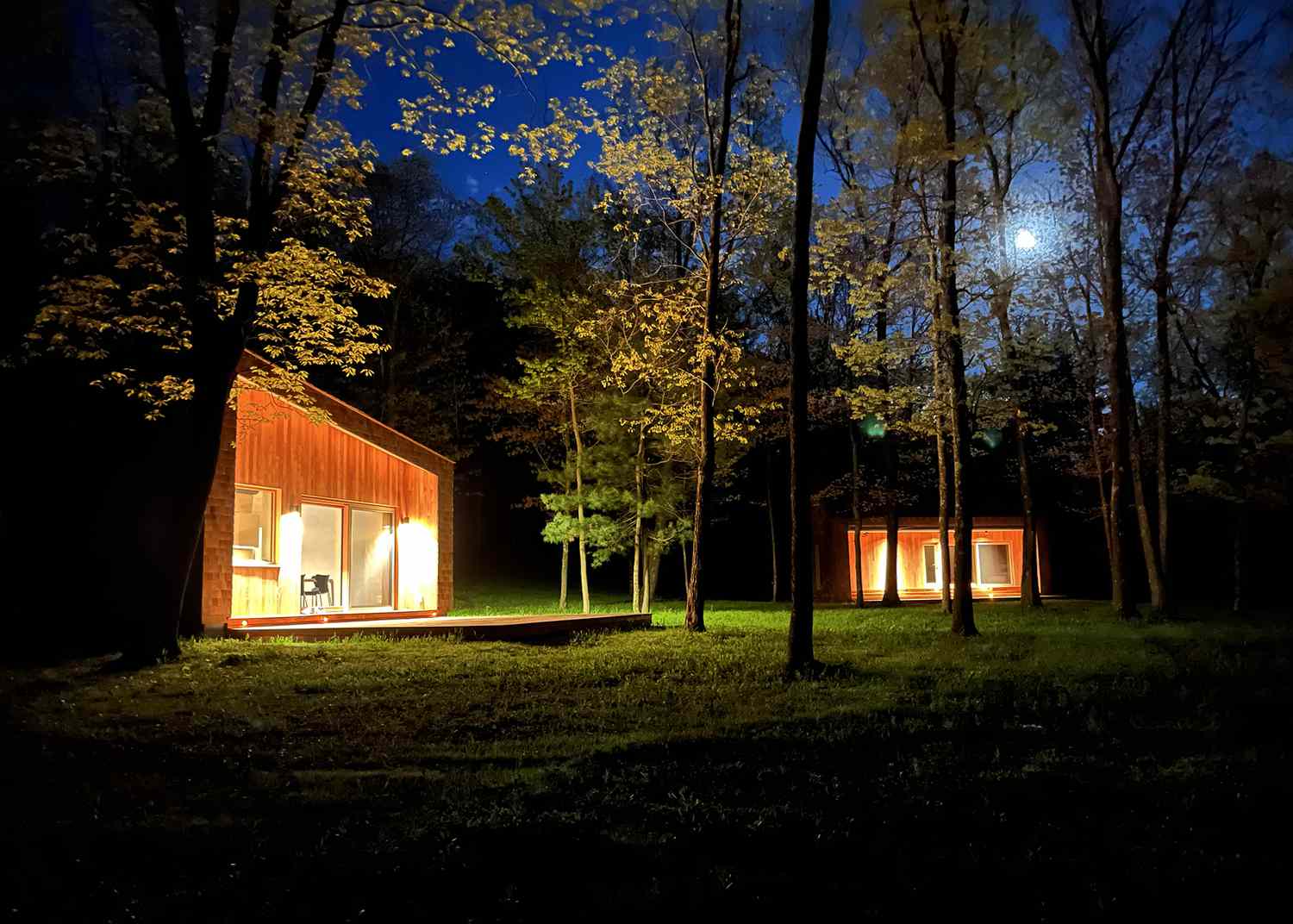[ad_1]
Extended-time readers of this net web page will know that we aren’t essential followers of the huge properties we normally see in North American suburbs. Not solely is there a great deal of wasted dwelling inside, nonetheless they take a great deal of vitality to assemble and defend, and that is not together with the upfront carbon emissions which shall be related to the gives they’re constructed with. We want a radical low price in upfront carbon emissions—considerably all through the creating enterprise—and we want it now, not later.
Nonetheless convincing people who we want smaller properties will most likely be an uphill battle, considerably in societies the place the concept of “huge” is usually culturally equated to “higher.” Nonetheless, that hasn’t deterred multidisciplinary designers like Brooklyn-based Kaja Kühl, who designed two hempcrete micro-home prototypes for a farm in upstate New York.
Accomplished as a collaboration with Pennsylvania-based development studio Coexist and architect-of-record Roger Cardinal, the properties are supposed as a pair of guesthouses that had been impressed by the common-or-garden vernacular development of native farmworker homes and cabins of the world. As Kühl tells Dezeen:
“[Historic] farmworker homes and cabins all through the area, together with completely totally different parts of america … normally attribute an rectangular sort and a easy pitched roof sort that continued to cowl a protracted porch. They’d one room or presumably a small sleeping nook along with the primary room.”
The 2 buildings share an comparable aesthetic nonetheless had been deliberately made to look distinct by modifying their roof profiles. One guesthouse options a regular gable roof, whereas the choice sports activities actions actions a roof that has a further dynamic slope to it. Each are clad with cedar picket shingles and black locust picket siding, and each are outfitted with massive exterior decks that develop the inside dwelling additional exterior.
Kaja Kühl
Nonetheless maybe primarily primarily probably the most notable selections of those micro-homes are invisible. For starters, they’re constructed with hempcrete, which is an energy-efficient, water-efficient, and thermally-efficient creating provides comprised of hemp and lime, which is a low-carbon completely totally different to concrete.
Laszlo Kovacs
The employees consulted with Hempstone, and in response to their calculations, the hemp all through the 2 micro-homes sequesters the same quantity of carbon as 330 tree seedlings grown over a interval of 10 years. She says:
“The hempcrete didn’t disappoint, storing the perfect quantity of carbon in each buildings. Cellulose might also be spectacular with out the extra properly being advantages that hempcrete gives. Lastly, paying nearer consideration to embodied vitality, be it by utilizing further bio-based gives or gives processed with renewable vitality is essential to scale back emissions all through the essential quick time interval, setting buildings on a path to lowering emissions of their design and enchancment.”
Kaja Kuhl
The interiors are totally attractive too—exuding light and a deliberate simplicity that belies the beauty of the gives used.
Laszlo Kovacs
The 2 dwellings are designed with passive residence design ideas in concepts, so to maximise passive image voltaic heating, the properties have their residence dwelling home windows and sliding doorways oriented within the path of the south and west.
Laszlo Kovacs
Behind the partitions, hemp spray insulation was furthermore utilized.
Laszlo Kovacs
The micro-homes are powered by electrical vitality sourced from {a photograph} voltaic photovoltaic array shut by and use water from a appropriately positioned on-site.
Laszlo Kovacs
Lastly, Kühl’s perform is to assemble climate-positive buildings that transcend net-zero carbon emissions, with the additional perform of eradicating further carbon from the ambiance. Kühl’s estimation of the small residence motion is nonetheless lifelike:
“Accurately, how can a 400-square-foot dwelling make an infinite distinction? It can not. The objective… is to place the 400 sq. foot dwelling into a fair larger context. To put it to use as a automobile to analysis, give consideration to and downside the numerous scales of decision-making that result in our monumental ecological footprint. From exact property markets to zoning authorized tips to worldwide current chains of gives to the very minute design and enchancment particulars that go into creating an energy-efficient dwelling. The 400-square-foot dwelling is a part of a multi-scalar system of manufacturing and consumption. Makes an attempt to be ‘off the grid’ don’t change that. I hope that it would function some form of prototype for small dwelling objects, nonetheless way more so to spark dialog about our ecological footprint and one of the best ways further info on tips on simple strategies to ‘act’ on native local weather change will result in a particular native local weather activism.”
It is a sobering thought, nonetheless rightfully places the design self-discipline in a masses bigger image the place monumental modifications on all ranges of society might want to occur; good, sustainable design will not primarily be the one problem that saves the world, nonetheless that does not recommend we do not attempt.
To see further, go to Kaja Kühl’s mission diary, Establishing Native local weather Optimistic, and her net web page You Are The Metropolis.
[ad_2]
Present hyperlink
